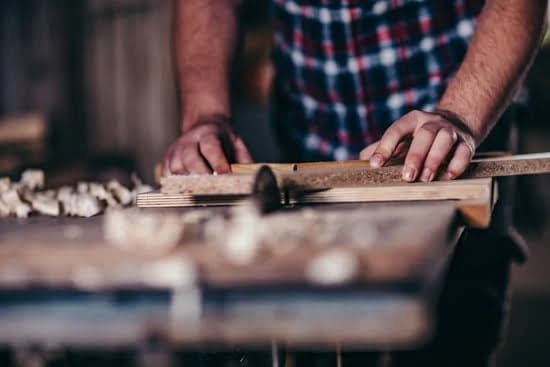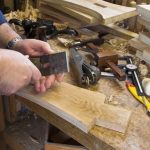When it comes to woodworking, having the right tools can make all the difference in the quality of your projects. One of the most crucial tools for any woodworker is a table saw. In this article, we will delve into the world of table saws and explore some of the best options available for woodworking enthusiasts.
Table saws are an essential piece of equipment in any woodworking shop, offering precision and efficiency in cutting various types of wood. From ripping boards to creating intricate designs, a reliable table saw can significantly enhance your woodworking projects. Whether you are a beginner or a seasoned woodworker, investing in one of the best table saws for woodworking is key to achieving professional results.
In this comprehensive guide, we will discuss the different types of table saws available on the market, including portable, contractor, cabinet, and hybrid models. Each type has its own set of features and benefits, catering to different woodworking needs and preferences. By understanding the distinctions between these types of table saws, you can make an informed decision when selecting the best one for your workshop.
Types of Table Saws
When it comes to selecting the best table saws for woodworking, understanding the different types available on the market is essential. Table saws come in various designs and configurations, each catering to specific needs and preferences of woodworkers. The four main types of table saws include portable, contractor, cabinet, and hybrid models.
Portable Table Saws
Portable table saws are compact and lightweight, making them ideal for jobsites or workshops with limited space. These saws can be easily moved from one location to another, making them convenient for woodworking professionals who need flexibility. Despite their smaller size, portable table saws still offer decent power and cutting capabilities, making them suitable for a wide range of projects.
Contractor Table Saws
Contractor table saws are slightly larger than portable models and are designed for more heavy-duty use. They are often equipped with more powerful motors and larger cutting capacities, making them suitable for professional woodworkers or DIY enthusiasts working on bigger projects. Contractor table saws typically have a larger tabletop surface area compared to portable models, providing more stability and support when working with larger pieces of wood.
Cabinet Table Saws
Cabinet table saws are the most robust and sturdy type of table saw available. They feature a fully enclosed cabinet base that houses the motor, making them quieter and more durable than other types of saws. Cabinet table saws are designed for high-precision cuts and heavy-duty woodworking tasks. They usually come with large tabletop surfaces, powerful motors, and advanced features such as dust collection systems and superior fence systems.
Hybrid Table Saws
Hybrid table saws combine elements of both contractor and cabinet saws, offering a good balance between performance and affordability. They are typically less expensive than cabinet saws but offer similar features in terms of power and precision. Hybrid table saws are a popular choice among intermediate woodworkers looking for a reliable machine that can handle a variety of projects effectively.
Key Features to Look for in a Table Saw
Table saws are essential tools for woodworking projects, but choosing the right one can be a daunting task. When looking for the best table saws for woodworking, there are key features to consider to ensure that it meets your needs and requirements. One crucial aspect to look at is the power of the table saw.
The power rating of a table saw is typically measured in amps or horsepower, with higher values indicating more cutting power. This is especially important when working with hardwoods or thicker materials that require more force to cut through.
In addition to power, blade size is another important feature to consider when selecting a table saw for woodworking. The size of the blade determines the depth and width of cuts that can be made, so choosing the right blade size for your projects is essential for achieving precision and accuracy. Common blade sizes for table saws range from 8 inches to 12 inches, with larger blades allowing for deeper cuts.
Moreover, cutting capacity is a key consideration when evaluating table saws for woodworking projects. The cutting capacity refers to the maximum width and depth of material that can be cut by the saw. It is important to choose a table saw with a cutting capacity that matches the thickness of materials you typically work with in order to ensure efficient and accurate cuts.
Additionally, safety features should not be overlooked when choosing a table saw. Look for models with features such as blade guards, riving knives, and anti-kickback pawls to minimize the risk of accidents while operating the tool.
| Key Feature | Importance |
|---|---|
| Power | Higher power enables cutting through tougher materials |
| Blade Size | Determines depth and width of cuts; choose based on project needs |
| Cutting Capacity | Maximum width and depth of material that can be cut; match with project requirements |
Tips for Choosing the Right Table Saw for Your Woodworking Projects
When looking to invest in the best table saws for woodworking projects, there are a few key considerations to keep in mind. One of the most important factors to consider is your budget. Table saws range in price from budget-friendly options for beginners to high-end models with advanced features for professionals. It’s essential to find a balance between cost and quality to ensure you get the best value for your investment.
Another crucial factor to consider when choosing a table saw is the space available in your workshop. Portable table saws are ideal for those with limited space or who need a saw that can be easily transported to different job sites. On the other hand, cabinet and hybrid models offer more stability and power but require more space to operate efficiently. Consider your workspace limitations and choose a table saw that fits comfortably in your woodworking setup.
Lastly, when selecting the right table saw for your woodworking projects, it’s essential to assess your skill level. Beginner woodworkers may prefer a user-friendly option with safety features that make learning easier, while experienced craftsmen might require a more versatile and powerful saw to tackle complex projects. Evaluating your skill level will help you choose a table saw that suits your abilities and allows you to grow as a woodworker over time.
- Consider your budget carefully before investing in a new table saw
- Assess the available space in your workshop to determine the size and type of table saw that will fit comfortably
- Evaluate your skill level as a woodworker to choose a table saw that matches your experience and project requirements
Maintenance and Safety Tips for Table Saws
When it comes to woodworking, having the best table saws for woodworking is essential, but equally important is maintaining and using them safely. One of the key maintenance tasks for a table saw is blade maintenance. Regularly cleaning your table saw blade can help prevent it from getting clogged with sawdust and resin buildup, which ultimately affects its cutting performance.
To clean the blade, disconnect the power source, and remove it from the saw. Use a blade cleaning solution or a mixture of water and dish soap to soak and scrub away any debris. Remember to dry the blade thoroughly before re-installing it.
Proper usage of a table saw is crucial to ensuring both efficiency and safety in your woodworking projects. Always read the user manual that comes with your table saw to understand its specific features and safety instructions.
When operating the table saw, make sure to wear appropriate safety gear such as safety goggles, hearing protection, and work gloves to protect yourself from potential hazards. Additionally, never remove or bypass safety features on your table saw as they are designed to prevent accidents.
Investing in top-quality safety gear may seem like an added expense, but it is worth every penny when it comes to working with table saws. Safety gear such as push sticks, featherboards, riving knives, and splitters are essential accessories that can significantly reduce the risk of kickbacks and other accidents while using a table saw.
Always prioritize investing in high-quality safety gear that meets industry standards to ensure maximum protection while working with your table saw. By following these maintenance and safety tips for table saws, you can create a safe and productive woodworking environment for yourself.
Conclusion
In conclusion, choosing the best table saw for woodworking is a crucial decision that can significantly impact the quality of your projects and overall safety in your workshop. By understanding the importance of table saws in woodworking and comparing different types such as portable, contractor, cabinet, and hybrid models, you can make an informed choice that fits your specific needs and budget.
Key features to consider when selecting a table saw include power, blade size, cutting capacity, and safety features. These factors play a significant role in the performance and precision of the tool. It’s essential to prioritize safety by investing in proper safety gear and following maintenance tips to ensure smooth operation and longevity of your table saw.
By taking into account your budget, available space, and skill level, you can narrow down your options and find the best table saw for woodworking that suits your requirements. Whether you’re a beginner or a seasoned woodworker, making a well-informed decision when investing in a table saw will enhance the efficiency and accuracy of your woodworking projects for years to come.
Frequently Asked Questions
What Is the Best Workshop Table Saw?
The best workshop table saw is typically one that strikes a balance between power, precision, and durability. Look for features like a strong motor, accurate fence system, stable tabletop, and safety features. Brands like SawStop, Powermatic, and Festool are well-regarded by woodworking professionals.
What Type of Saw Is More Appropriate for Woodworking?
When it comes to woodworking, a table saw is often the preferred choice due to its versatility and ability to make precise cuts on large pieces of wood. However, for more intricate or detailed work, a bandsaw or scroll saw may be more appropriate. It ultimately depends on the specific woodworking project at hand.
How Do I Choose a Woodworking Table Saw?
Choosing a woodworking table saw involves considering factors such as the type of projects you will be undertaking, available space in your workshop, budget constraints, and desired features like dust collection systems or mobility options. Test out different models if possible to see which one feels most comfortable and suits your needs best.

Hi everyone! I’m a woodworker and blogger, and this is my woodworking blog. In my blog, I share tips and tricks for woodworkers of all skill levels, as well as project ideas that you can try yourself.





